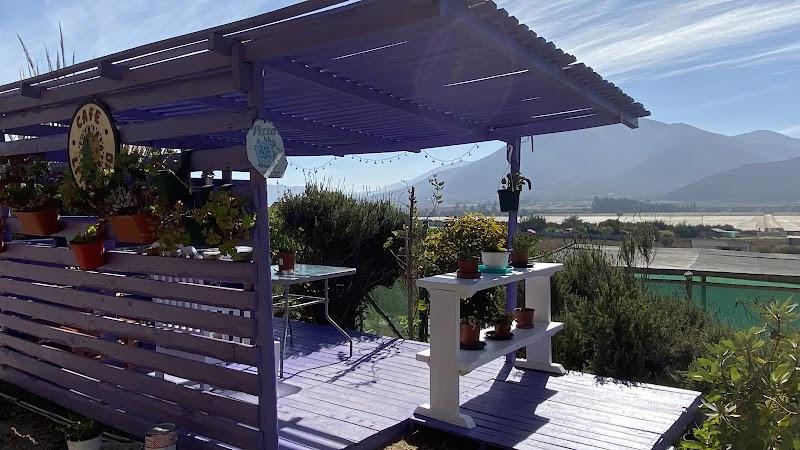
Explore Astronomy Nights at Mamalluca Observatory in La Serena
Experience the thrill of night skies like never before at Mamalluca Observatory in La Serena, Coquimbo. This unique astronomy night combines a manageable hike, expert-led stargazing, and the chance to witness cosmic wonders in a remote, clear-sky setting.
Wear Sturdy Hiking Shoes
The path to Mamalluca Observatory includes gravel and uneven surfaces. Shoes with good traction will keep you steady as you navigate elevation changes.
Bring Layered Clothing
Temperatures drop quickly after sunset. Dressing in layers helps you stay comfortable during the hike and the astronomy session.
Hydrate Before and During the Visit
The dry environment and physical activity require adequate water intake to avoid dehydration.
Arrive Early for Orientation
Plan to reach the observatory before nightfall. This lets your eyes adjust to darkness and allows you to absorb the setting calmly.
Explore Astronomy Nights at Mamalluca Observatory in La Serena
When twilight deepens over La Serena, a new kind of adventure begins at Mamalluca Observatory. Perched on the hills of the Coquimbo region, this observatory offers a chance to engage fiercely with the night sky, framed by a landscape that both invites and demands your attention. The hike here is not a trek into the wild, but a deliberate walk through gentle hills and clear paths, approximately 3 kilometers from the nearest parking area with an elevation gain of around 120 meters. The terrain is a mix of gravel and compact earth, traversing low brush and scattered carob trees, whose branches lean toward the sky, as if reaching to touch the stars you'll soon meet.
The evening’s highlight—a guided tour of the cosmos—turns the heavens into an interactive landscape. Powerful telescopes focus sharply on distant galaxies and nebulae, while experts narrate stories not only from astronomy but local indigenous star lore. Shadows retreat as planet surfaces and star clusters emerge with crisp clarity.
Prepare practically for this nocturnal adventure: sturdy hiking shoes will handle uneven terrain, and layers are essential to combat dropping temperatures after sundown. Water is vital, not only to stay hydrated but also to soothe the dry desert air’s effect on your throat. Arriving early gives you time to adjust and absorb the environment’s quiet pulse, as the wind threads softly between the hills.
The observatory is accessible year-round but shines brightest on clear, moonless nights when the Milky Way strands itself across the firmament in bold relief. Keep in mind that the path can be uneven and steep in places—treat the land with respect, step carefully to avoid disturbing the native flora that clings to the soil’s fragile grasp.
For visitors curious about more than just the stars, the nearby city of La Serena offers practical amenities and cultural spots to round out your trip. Early dinner options fuel your night adventure, giving you energy without weighing you down. And after your cosmic journey, the refreshed air and vast starfield leave you grounded in a moment of quiet wonder.
This is an adventure both accessible and immersive—a measured engagement with a landscape and sky that are fiercely themselves, inviting you to witness the universe on your terms, prepared and alert.
Nearby Trips
All Adventures
Boat Charters
Water Activities
Adventures near La Serena, Coquimbo
Discover the unique and memorable adventures that make La Serena, Coquimbo special.
Frequently Asked Questions
Is the Mamalluca Observatory suitable for children?
Yes, the observatory offers family-friendly programs. The hike is gentle enough for older children, but young kids should be supervised closely, especially during night hours.
Can I visit the observatory without hiking?
There is parking close to the observatory, reducing the need for an extensive hike. However, some walking over uneven terrain is unavoidable to reach the telescope area.
Are telescopes provided for public use?
Yes, Mamalluca provides powerful telescopes operated by guides who assist visitors in viewing celestial objects clearly.
What local wildlife might I encounter on the walk?
Small mammals like degus and birds including the Chilean mockingbird are common along the path. These creatures often observe visitors cautiously from their brushy habitats.
Is photography allowed during the night sessions?
Photography of the night sky is welcome; however, using flash can disrupt other visitors' night vision. Red light and long exposures are recommended.
Can the observatory be visited during daytime?
Day visits are possible but the astronomy programs focus on nighttime sky observation. Daytime tours emphasize educational exhibits.
Recommended Gear
Hiking shoes with good grip
Supports stability on rocky trails and uneven surfaces.
Layered clothing
Keeps you warm as temperatures drop after sunset.
Water bottle
Maintains hydration in the dry air during both hike and observation.
Headlamp or flashlight with red light
Allows safe movement without disturbing night-adapted vision.
Local Insights
Hidden Gems
- "The nearby El Observatorio viewpoint offers panoramic views of the city and Pacific Ocean."
- "The surrounding carob groves create quiet spots perfect for a reflective pause before the night session."
Wildlife
- "Nocturnal bats occasionally flit in the hills around the observatory at dusk."
- "Hummingbirds may be spotted during earlier sunset hours near flowering bushes."
History
"Mamalluca Observatory, founded in 2000, is a pivotal site for public astronomy in Chile, fostering science education and cultural exchange with indigenous astronomical traditions."
